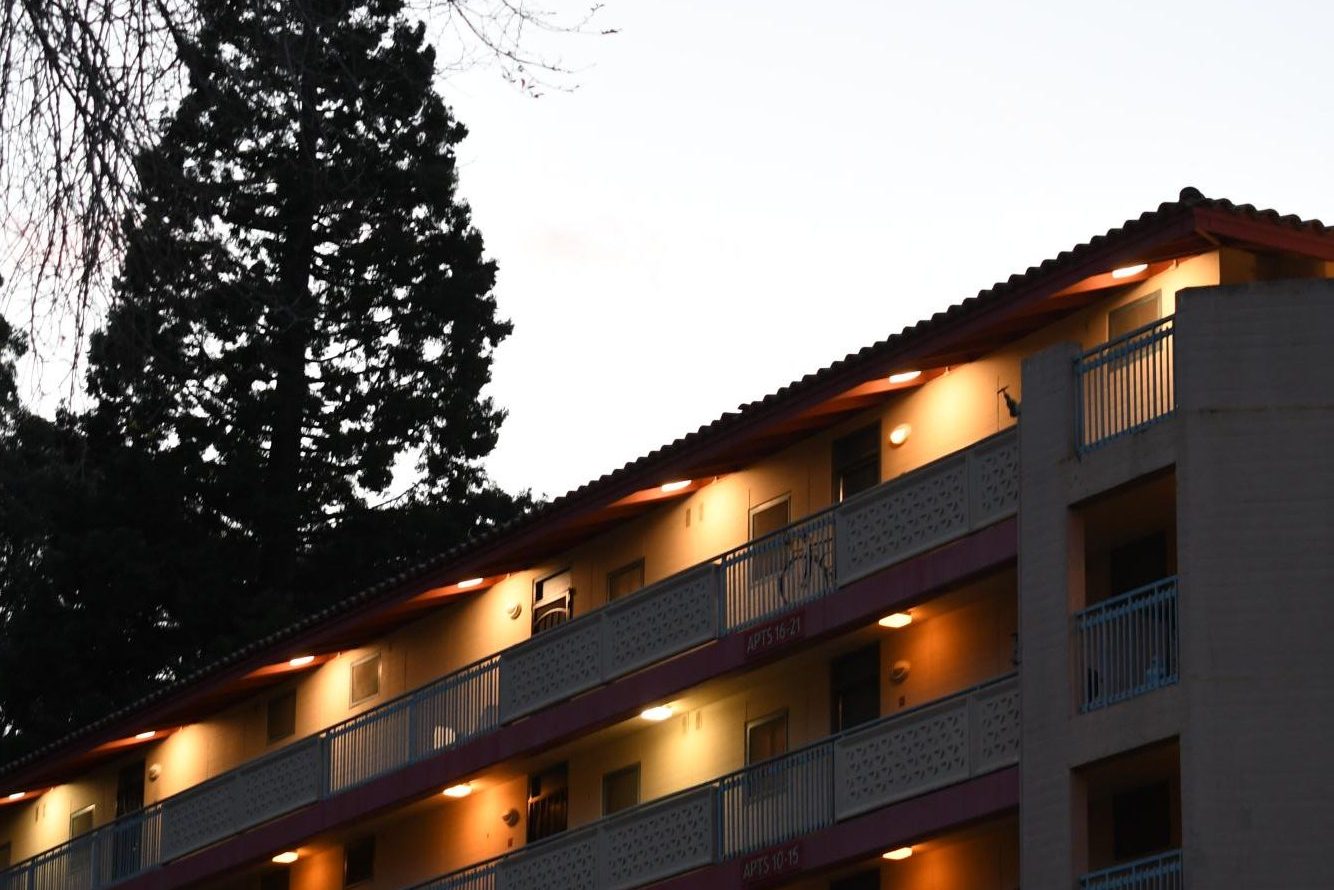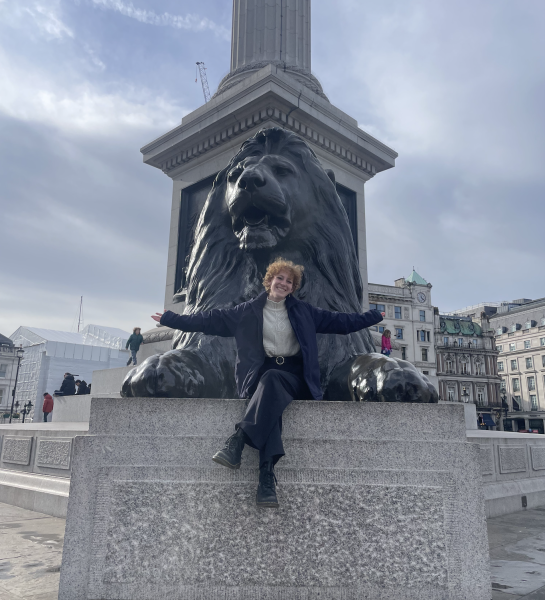Overview
Adjacent to the Marin Headlands, five minutes out from the Golden Gate Bridge, and right off Highway 101 sits the oldest and largest public housing complex in Marin County, Golden Gate Village (GGV). Recognizable by its sprawling red-roofed buildings, the Golden Gate Village makes up a large part of Marin City. According to the Pacific Sun, a Marin County newspaper, it sits on a 32-acre plot of land and has 294 live-in apartments that house over 700 low-income, predominately Black residents, some of them having resided there for multiple generations.
As of March 2023, the building and its residents are facing a battle against the Marin Housing Authority (MHA). The MHA aim to enact a housing plan that eradicates its affordability, rids it of many historical aspects, and displaces countless of its residents.
The History
It’s impossible to discuss the GGV without talking about its complicated connection to long-standing racism and discrimination in Marin.
The structure was completed in 1960 after seven years of discussion among County workers. Its purpose was to house displaced Black workers who had come to Sausalito during World War II to work in the shipyards.
During World War II, the wartime industry in California boomed, and the San Francisco Bay Area became one of the biggest ship manufacturers in America. From 1940 to 1945, more than 40,000 Black Americans migrated to California, with 70 percent of them taking jobs in the shipyards. All shipyard workers lived in temporary barracks around the port. However, after the war when white workers went to buy houses throughout Marin and the Bay Area, Black workers were banned from buying houses nearly everywhere through redlining and clauses written into housing deeds called “restrictive covenants.”
“Essentially, restrictive covenants were laws written into place that barred people of certain races from buying houses in certain areas,” Tula Peltz, Tam junior and Marin Restrictive Covenant Project intern, said.
These covenants made it so Black ship workers were forced to stay in the wartime barracks, which over time became dilapidated and broken down, Peltz explained. Many stayed here for over a decade.
In the early fifties, various designs were proposed to replace the barracks with a public housing complex. Soon after, Marin County’s first female supervisor, Vera Schultz, became involved in the project. Schultz obtained federal funding to build the complex and appointed Aaron G. Green, an architect of the Civic Center, to design it.
According to the Sausalito History Society, Green told MarinScope Newspaper, “This is the first link in transforming a rundown relic into one of the finest communities in the world.”
The finished complex featured six high-rises with red-tiled roofs, floor-to-ceiling windows, and patios overlooking Richardson Bay. It was notable for its park-like landscape and use of natural topography. It contained 1,500 family units and 1,000 dormitory spaces, the San Francisco Chronicle wrote in an article published in 2020. At its creation, the GGV was inside Marin’s only Black community.
“This is not your everyday run-of-the-mill public housing,” Royce McLemore, president of the Golden Gate Villages Resident Council and a long-time GGV resident, said. “It’s a beautiful building which has connected a whole lot of history, something we are trying to preserve.”
In 2017, McLemore applied for the GGV to be listed in the California Register of Historical Resources, which it was awarded. Over the years the GGV has been given a multitude of other honors as a result of its beautiful architecture and history. In 1964, it was awarded First Honors by the Public Housing Agencies of the Department of Urban Development (HUD) for design excellence. In 2021, GGV won first place in the Historic American Landscape Survey Challenge, a national competition sponsored by the National Park Service.
However, despite all its accolades, and the protection provided by the National Register of Historic Places, it has been unable to protect itself against any of the Marin Housing Authorities (MHA) regulations.
The GGV has been owned and operated by the MHA since its establishment, meaning that the MHA holds power over the housing complex.
The MHA is a public corporation created under the Health and Safety Code of the State of California, and authorized to provide decent, safe, and sanitary housing for low and moderate-income people. They operate under the larger government agency, the Department of Urban Development (HUD).
HUD is a federal agency that’s intent is to address issues related to housing discrimination, homelessness, fair housing practices, and urban development. Despite both the MHA and HUD being programs meant to assist low-income housing, the residents of the GGV have felt neglected by the programs, which have failed its repair upkeep for over a decade.
In 2013, the residents of GGV began complaining to the County about the need to rehabilitate the building, which faces a series of issues, including plumbing, electrical, rat infestations, and more.
“I saw black plastic rodent control boxes next to many of the buildings. Trash clogged the trenches beneath the drainage grates I peered into,” journalist Nikki Silverstein wrote in a 2021 article for the Pacific Sun, where she took a tour of GGV.
“If a resident had rats, roaches, mildew, mold, and they reported it to the MHA and the MHA doesn’t do anything about it, you could then call Marin County Environmental Health Services (EHS), and they would come in and inspect your unit. If they see your complaint was real, they would put heat on the housing authority,” McLemore said.
EHS is a division of Marin’s Community Development Agency that focuses on protecting public health. McLemore said that around 2010, EHS lost its authority to inspect residences owned by the MHA.
The MHA continued to ignore complaints and residents began suing the MHA. Currently, the GGV is pending a federal lawsuit against the MHA for what residents call “demolition by neglect.”
In 2019, the project garnered the attention of lawyers, non-profits, and architects who became a part of the Golden Gate Village Residents Council and volunteered to help the community fight their case.
The Council created an extension rehabilitation plan for the building with deep green renovations. It outlined renovations with minimal displacement of citizens and for over-housing, especially of seniors, to be addressed without having to remove them from the building along with new opportunities to be created for the GGV. Further, they wish to set up a cooperative system, where GGV residents would have the ability to invest in homeownership, initially at a reduced price. A co-op would cut its ties with the MHA and self-govern, with the funding of the non-profits and the help of professional volunteers. With the co-op system, GGV residents would be given the chance to buy the land from the MHA and operate the GGV themselves.
“We get to decide and control our own future. We’re not treated as children who can’t be trusted to make a decision that affects their own lives. We are in charge of our own destiny,” Royce McLemore, president of the Council said to the Marin Independent Journal.
“There’s no other reason the MHA would so continuously ignore the residents’ needs except for racism. The Village was and continues to be one of the only majority-Black public housing in Marin,” Nancy Miller, co-chair of Mill Valley’s Seniors for Peace, which has been working with the Council for around four years, said. “With [the MHAs] newest ideas, they will erase the history behind the building and erase the whole idea behind the building: affordability.”
The MHA has combated this plan by constructing their own. The MHA’s plan of rehabilitation for the buildings, a plan that does not align with the wishes of the residents, includes renovations that would displace many residents of the GGV, and destroy much of the historical aspects of the building.
They plan to bring in a developer who would be a partner and raise money for the renovation, according to McLemore. With the developer, residents would not be able to purchase into the redevelopment for another 15 years.
While the Council’s plan outlined the restoration of many buildings, the MHA sought to completely tear many of them down and build modern structures. Not only would demolishing these buildings displace hundreds of residents – many of them elderly –, it would make them open to the general public, not just for low-income citizens.
“Marin housing wants to ideally remove all the residents to make the houses over there, the low-income ones, appealing to those who can actually pay for the housing that will be there,” Lynette Engelhauf, head of the Marin City Board, said.
There’s also fear from the residents that the MHA will sell the land to a buyer who would then have the power to put the land up for sale at market price.
“That will completely gentrify Black people from living in Marin City. We were 90 [percent of the population] some 30 years ago. Now, we’re 25 percent,” McLemore said.
The GGV and MHA brought their plans to the Marin Housing Commission, which is made up of the Marin Board of Supervisors and two residents of GGV. In November 2022, there was a set date for the vote on whether to approve the residents’ plans. However, days before the vote took place, the residents’ plan was taken off the agenda, and the Marin Housing Commission decided to vote solely on whether they would approve the MHA’s plan.
The Marin Housing Commission approved MHA’s plan. As of March 2023, the MHA has hired a developer and will move forward with it.
“The Marin Housing Authority has not done their job, the citizens have been asking for repairs for so long, and they have not done anything. They say with this new plan repairs will come, but they have no reason to believe them,” Angela Miller, a volunteer for the Council who testified to get the plan passed, said. “This whole thing, it’s more than just getting the pipes fixed or getting a fresh coat of paint on the building. This is about fixing the wrongs of the past. The residents of the GGV have been mistreated for so long.”






Lisa graham ♦ May 29, 2024 at 2:34 pm
Such a well written piece. Thank you. I say give the GGV residents what they want and what they need and what they deserve!!!